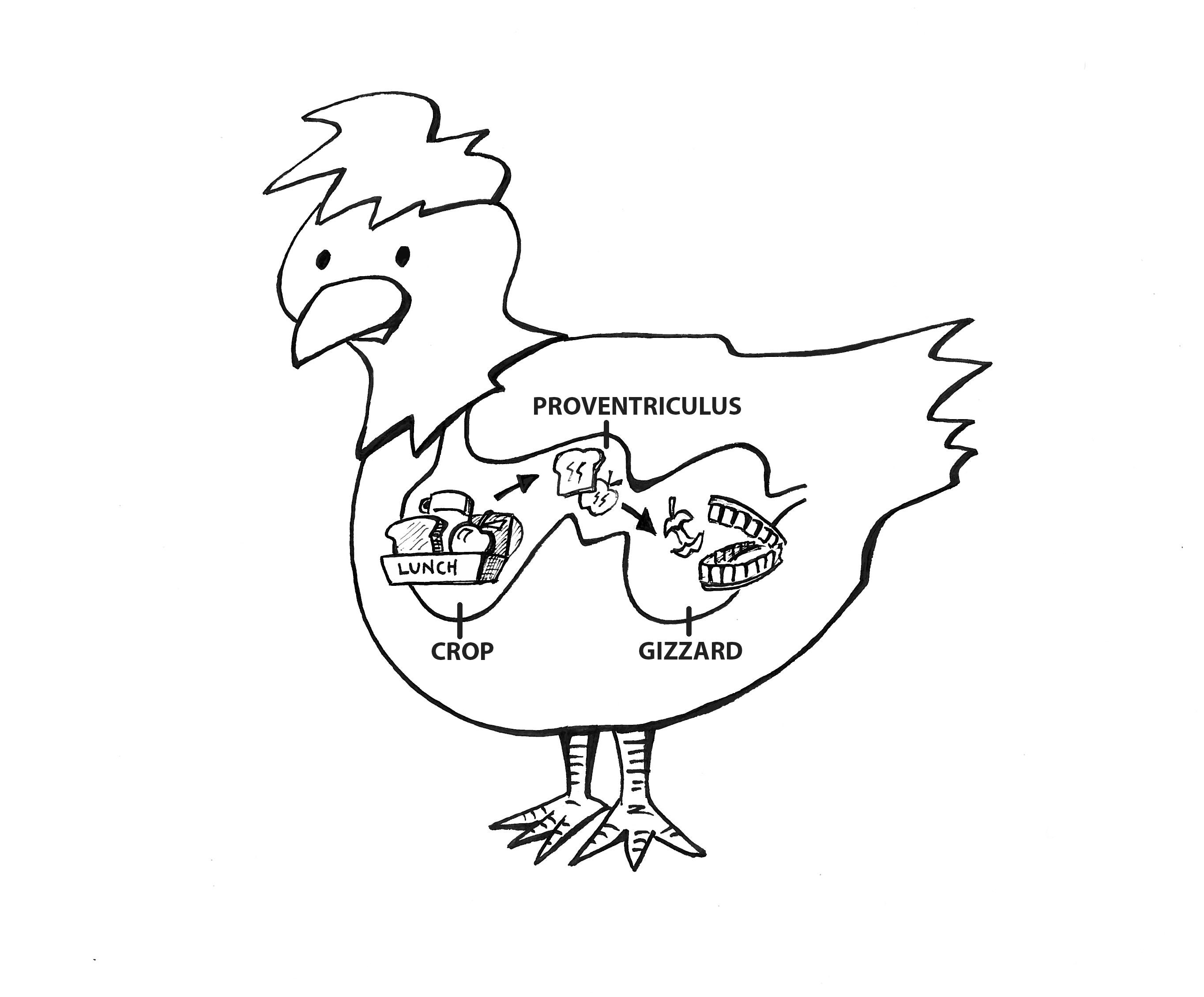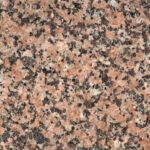Do Chickens Need To Eat Rocks? Yes, chickens definitely need to ingest small rocks and grit as these items play a crucial role in their digestive process, enabling them to properly break down food and absorb essential nutrients. Rockscapes.net is here to help you understand why providing grit is essential for your flock’s health and how to ensure they have access to this vital supplement, preventing digestive issues and promoting optimal well-being in your backyard chickens. Discover more about chicken care, landscaping around your coop, and the natural beauty of rock elements at Rockscapes.net!
Table of Contents
- What is Grit and Why Do Chickens Need It?
- How Does a Chicken’s Digestive System Work?
- Types of Grit for Chickens: Insoluble vs. Soluble
- Providing Grit to Your Chickens: Best Practices
- Grit vs. Oyster Shell: What’s the Difference?
- Potential Problems from Lack of Grit: Sour Crop and Impacted Crop
- Natural Foraging vs. Providing Grit: What’s Best for Your Chickens?
- Choosing the Right Grit Size for Your Chickens
- How Much Grit Do Chickens Need?
- Where to Buy Grit for Chickens
- How to Make Your Own Chicken Grit
- Can Baby Chicks Eat Grit?
- Other Ways to Support Chicken Digestion
- Integrating Grit into Your Chicken Coop Landscaping
- FAQ About Grit for Chickens
1. What is Grit and Why Do Chickens Need It?
Grit is essentially small, hard particles of rock, granite, or other insoluble materials that chickens ingest to aid in their digestion. Chickens don’t have teeth to grind their food, so they rely on the gizzard, a muscular part of their stomach, to perform this function. According to poultry science experts, without grit, chickens cannot efficiently break down grains, seeds, and other food items, leading to poor nutrient absorption and potential health problems. Grit acts like tiny millstones in the gizzard, grinding food into smaller particles that can be more easily digested.
Providing grit is especially important for chickens that are primarily fed processed feed or confined to areas where they cannot naturally forage for small stones. Grit ensures they can properly digest their food, extract essential nutrients, and maintain overall health. Make sure your chickens get the grit they need!
2. How Does a Chicken’s Digestive System Work?
Understanding how a chicken’s digestive system works can help you appreciate the importance of grit. Here’s a simplified breakdown:
- Crop: This is a storage pouch where chickens store food after swallowing. The food softens here before moving on.
- Proventriculus: Also known as the true stomach, the proventriculus secretes digestive enzymes that begin to break down the food.
- Gizzard: This muscular organ contains grit and uses strong contractions to grind the food into smaller particles.
- Small Intestine: Here, nutrients are absorbed into the bloodstream.
- Large Intestine: Water is reabsorbed, and waste products are prepared for excretion.
- Ceca: Two pouches where some fermentation of undigested food occurs.
The gizzard’s role is pivotal in this process. Without grit, the gizzard cannot effectively grind food, leading to digestive issues and reduced nutrient absorption. According to research from the University of California, Davis, the presence of grit in the gizzard significantly improves the digestibility of feed and the overall health of chickens.

3. Types of Grit for Chickens: Insoluble vs. Soluble
There are two main types of grit for chickens: insoluble and soluble. It’s crucial to understand the difference to provide the right kind of support for your flock.
| Type of Grit | Description | Purpose | Examples |
|---|---|---|---|
| Insoluble | Hard materials that do not dissolve in the digestive system. | Physically grinds food in the gizzard, aiding digestion. | Granite, flint, quartz, sand |
| Soluble | Dissolves in the digestive system and provides calcium. | Acts as a calcium supplement, particularly important for laying hens. | Oyster shells, limestone, crushed eggshells |
Insoluble Grit: This type of grit remains in the gizzard to help grind food. It’s essential for all chickens, regardless of age or laying status. Examples include granite, flint, and quartz. These materials are hard and durable, providing the necessary abrasion to break down food particles.
Soluble Grit: This type of grit, such as oyster shells or limestone, dissolves in the digestive system and acts as a calcium supplement. While it does provide some grinding action, its primary purpose is to provide calcium for strong eggshell formation in laying hens.
4. Providing Grit to Your Chickens: Best Practices
Providing grit to your chickens is simple, but there are a few best practices to keep in mind. First, always offer grit separately from their regular feed. This allows them to consume it as needed. You can provide grit in a small dish or feeder within their coop or run.
- Offer Free-Choice: Allow chickens to access grit whenever they need it.
- Separate from Feed: Provide grit in a separate container to prevent overconsumption.
- Monitor Consumption: Keep an eye on how much grit your chickens are consuming to ensure they’re getting enough.
- Consider Age: Chicks need smaller-sized grit than adult chickens.
According to poultry experts at the University of Arizona, the amount of grit chickens need varies depending on their diet and environment. Free-ranging chickens may require less supplemental grit than those confined to a coop. However, it’s always a good idea to provide grit to ensure they have access to it when needed.
5. Grit vs. Oyster Shell: What’s the Difference?
One common mistake is confusing grit with oyster shell. While both are beneficial for chickens, they serve different purposes. Grit, as mentioned earlier, aids in digestion by grinding food in the gizzard. Oyster shell, on the other hand, is a source of calcium for laying hens.
- Grit: Aids digestion by grinding food.
- Oyster Shell: Provides calcium for strong eggshells.
It’s essential to provide both grit and oyster shell to your chickens, especially if you have laying hens. Oyster shell can be offered in a separate container, just like grit. Hens will consume it as needed to maintain strong eggshell production.
6. Potential Problems from Lack of Grit: Sour Crop and Impacted Crop
A lack of grit can lead to several digestive problems in chickens, including sour crop and impacted crop. Sour crop occurs when food sits in the crop for too long and begins to ferment, leading to a buildup of yeast and bacteria. This can cause the crop to become swollen and the chicken to appear lethargic.
Impacted crop, also known as bound crop, happens when the crop becomes blocked with undigested food, usually due to a lack of grit. Long strands of grass or other fibrous materials can accumulate and form a blockage. Both sour crop and impacted crop can be serious and may require veterinary intervention.
According to Dr. Robert M. Dores, DVM, a poultry veterinarian in Tempe, AZ, “Providing adequate grit is one of the easiest and most effective ways to prevent digestive issues in chickens. A lack of grit can lead to a cascade of problems, affecting their overall health and productivity.”
7. Natural Foraging vs. Providing Grit: What’s Best for Your Chickens?
Chickens that are allowed to forage naturally will often consume small stones and grit on their own. However, even free-ranging chickens may benefit from supplemental grit, especially if their foraging area is limited or lacks suitable materials.
- Free-Ranging: May find some grit naturally, but supplemental grit is still beneficial.
- Confined Chickens: Require supplemental grit to aid digestion.
In a backyard setting, where chickens may be confined to a coop or run, providing grit is essential. This ensures they have access to the materials they need to properly digest their food. Plus, with well-maintained landscaping around the coop (perhaps incorporating elements from Rockscapes.net), you can create a safe and enriching environment for your flock.
8. Choosing the Right Grit Size for Your Chickens
The size of the grit you provide should be appropriate for the age and size of your chickens. Chicks require finer grit than adult chickens.
- Chicks: Fine grit, often called chick grit.
- Adult Chickens: Coarser grit, such as granite grit.
Providing grit that is too large for chicks can lead to digestive problems, while grit that is too fine may not be effective for adult chickens. Most feed stores sell grit in various sizes, so be sure to choose the right one for your flock.
9. How Much Grit Do Chickens Need?
The amount of grit chickens need depends on several factors, including their diet, age, and access to foraging. As a general rule, chickens should have access to grit at all times and will consume it as needed.
- Free Access: Provide grit in a separate container and allow chickens to consume it as needed.
- Monitor Consumption: Keep an eye on how much grit your chickens are consuming to ensure they’re getting enough.
According to research from the Poultry Science Association, chickens typically consume about 1-2% of their feed intake in grit. However, this can vary depending on the type of feed and the availability of natural grit sources.
10. Where to Buy Grit for Chickens
Grit for chickens can be purchased at most feed stores, farm supply stores, and online retailers. Look for granite grit or poultry grit, and be sure to choose the appropriate size for your chickens.
- Feed Stores: Local feed stores often carry a variety of grit options.
- Farm Supply Stores: Stores like Tractor Supply Co. typically have a good selection of poultry supplies, including grit.
- Online Retailers: Amazon and other online retailers offer a wide range of grit products.
When purchasing grit, be sure to check the label to ensure it is made from a safe and suitable material for chickens.
11. How to Make Your Own Chicken Grit
If you’re looking for a more sustainable option, you can make your own chicken grit using materials you may already have on hand. One simple method is to crush clean, dry eggshells into small pieces.
- Crushed Eggshells: Bake clean eggshells to kill bacteria, then crush them into small pieces.
- Clean Sand: Ensure the sand is free from contaminants and small enough for your chickens to ingest safely.
- Small Pebbles: Collect small, clean pebbles from your yard, ensuring they are not treated with chemicals.
These crushed eggshells provide calcium as well as some grinding action in the gizzard. You can also use clean sand or small pebbles as a source of grit. Just be sure to avoid using any materials that may be contaminated with chemicals or other harmful substances.
12. Can Baby Chicks Eat Grit?
Yes, baby chicks need grit just like adult chickens. However, they require a much finer grit, often called chick grit. Chick grit is specially sized to be easily ingested by young chicks and to avoid causing digestive problems.
- Chick Grit: Fine grit specifically designed for baby chicks.
- Avoid Adult Grit: Do not give adult-sized grit to baby chicks, as it can cause impaction.
It’s essential to provide chick grit from the time chicks are a few days old to help them properly digest their food. You can sprinkle it on their feed or offer it in a separate dish.
13. Other Ways to Support Chicken Digestion
In addition to providing grit, there are other ways to support your chickens’ digestive health.
- Probiotics: Adding probiotics to their feed or water can help promote a healthy gut microbiome.
- Apple Cider Vinegar: A small amount of apple cider vinegar in their water can aid digestion and boost their immune system.
- Healthy Diet: Feeding a balanced diet with plenty of fiber can also support digestive health.
Maintaining a clean and sanitary coop environment is also crucial for preventing digestive problems. Regularly clean the coop and remove any soiled bedding to reduce the risk of bacterial infections.
14. Integrating Grit into Your Chicken Coop Landscaping
Integrating grit into your chicken coop landscaping can be both practical and aesthetically pleasing. Consider creating a designated area within the run where you provide grit. This area can be lined with gravel or small stones, providing a natural-looking and functional space for your chickens.
- Gravel-Lined Area: Create a small area lined with gravel or stones for providing grit.
- Natural Look: Incorporate natural elements into your chicken coop landscaping to create a visually appealing space.
You can also use larger rocks and stones from Rockscapes.net to create a visually appealing landscape around your chicken coop. This not only adds beauty to your backyard but also provides a stimulating environment for your chickens.
Address: 1151 S Forest Ave, Tempe, AZ 85281, United States
Phone: +1 (480) 965-9011
Website: rockscapes.net
15. FAQ About Grit for Chickens
-
Can chickens have too much grit?
Yes, chickens can overconsume grit if they are not provided with a balanced diet. Always offer grit separately from their feed and monitor their consumption. -
What is the best type of grit for chickens?
Granite grit is generally considered the best type of grit for chickens due to its hardness and durability. -
How often should I provide grit to my chickens?
Grit should be available to chickens at all times. Check the grit container regularly and refill as needed. -
Can I use sand as grit for chickens?
Yes, clean sand can be used as grit for chickens, but it may not be as effective as granite grit. -
Is grit necessary for chickens on pasture?
Even chickens on pasture may benefit from supplemental grit, especially if their pasture lacks suitable materials. -
What happens if chickens don’t get enough grit?
A lack of grit can lead to digestive problems, such as sour crop and impacted crop. -
Can I use oyster shells as grit?
Oyster shells are a good source of calcium but are not effective as grit for grinding food. -
Do chicks need grit?
Yes, chicks need a finer grit, often called chick grit, to help them digest their food. -
How do I know if my chickens are getting enough grit?
Monitor their droppings. If their droppings are consistently loose or contain undigested food, they may not be getting enough grit. -
Where can I buy grit for chickens?
Grit for chickens can be purchased at most feed stores, farm supply stores, and online retailers.
By understanding the importance of grit and following these best practices, you can ensure your chickens have healthy digestive systems and thrive in your backyard.
Are you inspired to create a beautiful and functional space for your chickens? Visit rockscapes.net for design ideas, information on various types of rocks, and expert advice. Contact us today to discover how we can help you design the perfect landscape for your feathered friends and explore the beauty of stone and rock in your yard.

